Is the climate change worrying you? Are you looking for ways to reduce your carbon footprint? Why don’t you start from your own backyard? One simple and natural way to boost the environment around you is to grow some plants. Trees and shrubs are easier to grow and give you a great deal of change in life. Start by sprucing up your own garden in the backyard.
When it comes to saving energy and fuel, gardens are not taken into account. You end up thinking of complex ecological solutions to climate change. However, you can save significant amounts of fuel, time, energy, and even reduce carbon emission by growing your own house garden.
Think about all the people in the world growing shrubs and trees around their houses. The world wouldn’t need any special programs to address the climate issues. Here are few simple steps to help you grow shrubs in your outdoors.
What are flowering shrubs?
We are surrounded by different types of plants. They, like us, do breathe and grow. A shrub is nothing but a type of woody plant that generally grows larger than normal garden plants. They are smaller than trees, and generally come in round shapes. Unlike trees, they have numerous main stems that grow from the ground level.
A flowering shrub, just as the name suggests, has attractive flowers that gives a great visual treat. They can be identified with their time of blooming, geographical location, and various other biological features. It’s high time you buy some shrubs for your home and give your garden a pleasant ambience. Flowering shrubs, like Cistus, Azalae, Shrub Roses, and much more can transform your garden into a small flowering paradise.
Where should I plant flowering shrubs?
Your garden landscape would greatly vary depending on the area you reside in. There are numerous shrubs that go well with particular landscapes. In your landscape, shrubs can be used for various purposes, such as privacy hedges, foundation plantings, specimen plants, and much more. They can also be used for defining garden beds and as backdrops for your garden.
Each type of flowering shrub has different characteristics based on their size, foliage, and type. Based on their behavior, they can be grown in containers, like pots, or as flower beds, fence linings, landscape edges, and even in hedges. Foliage varies for different plants, so choose the color you need for you garden for achieving a pleasing visual effect.
Sun vs. shade: Which environment is best?
Most of us dream of the day when our gardens would look perfect. We envision colorful foliage, tall, leafy trees, and groups of flowering perennials, perfectly moss-covered statuary, and sheltered spots for recreation. Your dream can in fact be made into reality by carefully choosing the right shrubs for your garden.
Some shrubs grow well in the sun, while some prefer shaded regions. Your garden will have a lot of shady areas and sunny patches as well. So, your choice of shrubs must greatly depend on the type of garden you plan to set up. If you choose to set up a rock garden, you can plant some sun-loving shrubs and climbers.
Shade
When the trees grow up, they shade the underneath area of the garden. You can’t grow your favorite roses, tropical, and other sun-lovers for such occasions. Luckily, there are alternatives, especially for growing shrubs in the shade. Some particularly stand out, like hydrangeas, dogwoods, euonymus, ninebark, and others which can come to your rescue.
While planting shady shrubs, you must be aware of the fact that some shrubs grow in almost full shade, while others prefer some amount of morning sun. Here are some shrubs that could do wonders to your shady garden:
Oakleaf hydrangea
For a nearly carefree and cheerful shrub, you can’t beat this native hydrangea. During the summer its leaves are bright green and they change into a stunning purple, red, bronze, and burgundy during the fall. When its white flowers mature, they take a pinkish tinge.
Hydrangea can survive even in hot climates. They flourish in the morning sun with afternoon shade or even in fully shaded regions.
Virginia sweetspire
This is a deciduous flowering shrub and grows 3-4 feet tall. It has fragrant, white flowers that bloom in the months of May and June. Flowers are found on the dropping stem and are also used for decorative purposes.
Sweetspire can tolerate extreme growing conditions and is also very easy to grow in your back garden. They can grow in part or full shade in wet as well as clay soil.
Sun
Are you located in a more tropical region or zone? Wondering what shrub to plant in your garden? It might be tricky to grow shrubs and plants in tropical, sunny areas. However, there are a few shrubs that are dedicated to dry patches of land. They require a lot of sunlight and can tolerate even the worst droughts. Here’s a list of a few deciduous shrubs that can find a place in your humid garden:
Wine and Roses Alexandra
You can ignite your landscape with this floral firework. They can be planted year around and can grow into mature plants in less than a year. During the spring, they have a rosy, tubular blossom that blankets the entire shrub. They give out a good fragrance and attract hummingbirds and many other pollinators. Their leaves are dark green in color and give a good green cover to your fence. They require pruning after each flowering.
Philadelphus coronarius
Often called Mock orange, these shrubs can grow 2-3 feet tall and have white blossoms that give out a sweet fragrance. They bloom during the late spring or in the early summer, and come in different varieties with single or double flowers. Its leaves are golden yellow in the spring and turn a darker yellow-green in the summer. They can be planted along the walkway or in the patio where you can savor the fragrance.
What are seasonal flowering shrubs?
Shrubs greatly depend on various seasons to give out a full bloom. While some flowering shrubs can grow in the summer, few others choose the late fall. But with careful planning, you can transform your garden into a paradise with shrubs blooming all year long.
Beautiful spring-flowering shrubs
Some shrubs grow well during the spring and can give your garden a good scent. Cercis chinensis is a redbud that grows into a large shrub or a small tree. During the springs of late March and April, this shrub blooms into masses of pinkish purple flowers.
Halesia carolina is also a spring-bloomer that has an adorable, snowflake like flowers. These flowers also turn into fruits that have four wings and a tail.

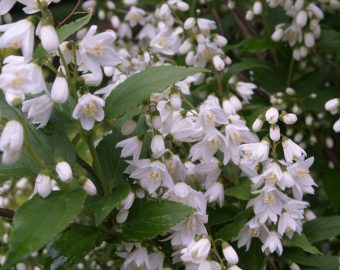
Acradenia frankliniae, a Tasmanian evergreen shrub, is also a spring-bloomer. They have small white flowers appearing in their terminal clusters. Ribes odoratum is a hardy shrub that can grow in almost all soil types. Their clove-scented flowers have five petals and are golden-yellow in color.
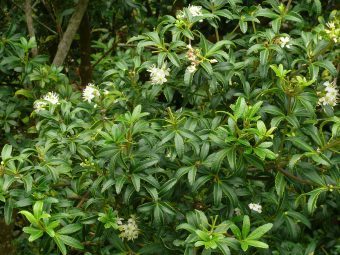
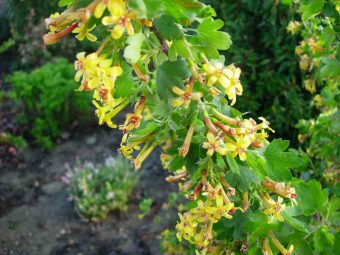
Summer-flowering shrubs
Imagine a summer in your garden surrounded by bunches of flowers. You can plant a few of these summer-flowering shrubs to transform the summers into humid heavens. Bluebeard shrub with its airy clusters of blue flowers is a treat for the late summer. The birds and butterflies also love this shrub.
Carolina allspice blooms with deep red flowers during the summer. They are native to North America and give out a powerful, spicy fragrance.
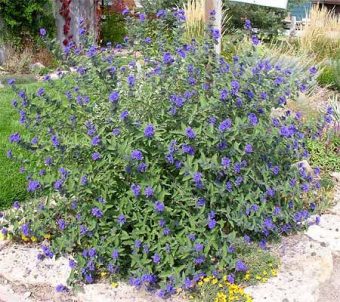
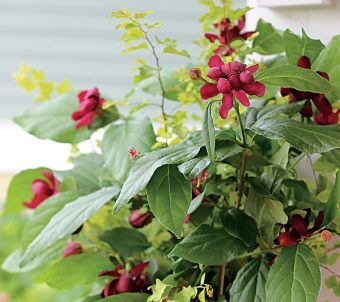
Oleander is an easy-care shrub that gives out flowers in shades of pink, lilac, yellow, purple, red, and white. In warm weather areas this shrub can be seen growing along the sides of the highways.
Rock Rose tolerate extreme drought and they are very easy to grow during the summer. They produce colorful roselike flowers that come in various colors like lavender, purple, white, and pink.

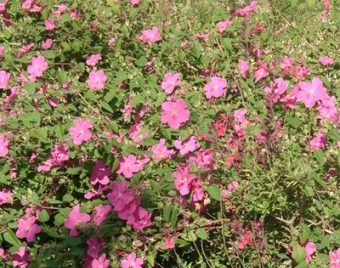
Shrubs that flower in the fall
Some shrubs can color your garden even during the fall. Plant a few of these shrubs in your garden to make the upcoming fall a pleasant one. Summersweet is a very famous fall-flowering shrub. During the late summer the early foliage of pink or white appears, and with the oncoming fall it blooms with red, orange, and yellow flowers.
Spindle tree, a deciduous shrub that generally grows into a small tree, has an unusual mixture of scarlet-crimson leaves. It starts giving out pink colored fruits during the fall. The fruits cover the entire shrub and give it an extraordinary look.
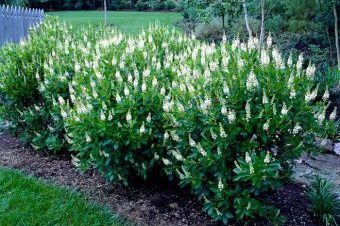
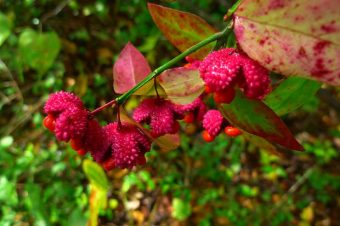
Shrubs blooming in winter
Some shrubs can bloom even during the short and dreary days of winter. Just the sight of these flowers taking the snow, rain, and frost in their stride will lift your spirits. Japanese Pieris has a cluster of bell-shaped flowers that bloom during the late winter and the early spring. This 12-foot-tall, evergreen shrub grows well in moist, well-drained soil.
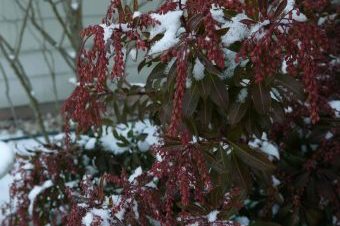
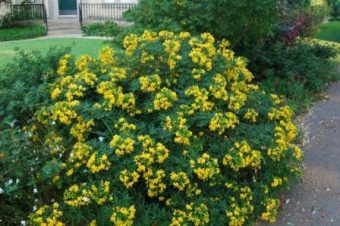
Cassia, the shrub that can grow into a small tree has yellow blooms during the early winter. It requires a sunny side of the garden and can fill your garden with its sweet scent.
Mexican Manzanita with its pink flowers can stay for over a long period in the late winter through spring. It’s easy to be grown and can fill your garden with winter blossoms.
How to care for your flowering shrubs?
Growing a shrub in your garden is not an easy job. It requires a lot of effort and interest. Here’s a simple strategy that describes how you can plant and grow your own shrubs in the garden:
Planting
You can start by digging a hole about twice the width of the container your plant is in. It’s better if you loosen the soil on the sides and bottom of the hole. Add some water to the hole and moisten the soil in it. Slowly cut down the sides of the container and carefully take out the shrub along with its roots and soil. Place it in the hole and fill it with enough sand. Give it a good and comfortable setting to grow.
Fertilizing
Just like people, plants also have some nutrient needs. Determine the type of fertilization your shrub needs. Generally fertilizers come in 10-20-10, where these numbers represents its nutritional contents, like potassium, phosphorous, and nitrogen. These micronutrients are very essential for the plant to grow.
Choose the right fertilizer for your shrub and mix it with your soil when needed. Generally, shrubs would require fertilizers once every six months. Track the timeline and fertilize your plants.
Watering
Watering the plants is an art. You shouldn’t underfeed or overfeed your plants; both will lead to their death. During the initial stages the shrubs will need regular watering, but as they grow up they can synthesize their own water from the earth. Until they grow up regularly, water them and keep a note of your watering cycle.
Pruning
Often shrubs require regular pruning for a healthy growth. Pruning improves the appearance of the plant and also protects people and property. You can cut down the branches that grow out of bounds, and remove undesirable waterspouts and branches in the shrub. You can remove dying or injured branches and promote their growth. Make sure that you don’t cut off a major growing branch.
Most popular flowering shrubs
Some of the most popular flowering shrubs that you can plant in your garden include French lilac, Weigela, Nanking cherry, Hydrangea, Forsythia, Viburnum, Rhododendron, and Rose of Sharon. They can be widely found in the plant nurseries and don’t require much care. They will add beauty to your garden.
Shrubs and other plants can make your garden into a pleasant place. Next time, when you find a vacant spot in your backyard, plant a flowering shrub and enjoy the loveliness is has to offer.
Frequently Asked Questions
Where can I buy flowering shrubs?
You can easily buy plants and shrubs from a greenhouse or horticulture store online or in your area. They would have outlets across the country and sell various deciduous flowering shrubs. You can also buy them from local nurseries and plant sale outlets around you. It’s also available online and you can simply order and acquire it on your doorstep.
What are some large flowering shrubs?
Some flowering shrubs can grow as tall as 15 feet and might give your hedge a good support. Shrubs, like Limelight hydrangea, can grow 8 feet tall. Summersweet, viburnum, Ninebark, Weigela, Shrub Rose, Lilac, Beauty bush, Potentilla, and many more shrubs can grow greater heights and can be used to decorate your walls.
When is the best time to plant flowering shrubs?
The best time to plant flowering shrubs in your garden is during the fall or in the early spring. This gives plenty of time for the roots to grow and get established within the landscape, increasing their chances of survival.
What are some fast growing flowering shrubs?
For instant garden impact, you can choose to plant fast-growing flowering shrubs, like
- Spirea japonica
- Common elder
- Hydrangea
- Forsythia
- Ribes
- Buddleia
- Photenia
- Cherry laurel
There are also many other fast growing shrubs that are highly dependent on their geological location.
Are there any evergreen flowering shrubs?
While evergreen shrubs grow the best in zones with milder winters there are numerous varieties that keep your landscape green throughout the cold and even snowy season. Some of these shrubs are confiers and appear to look just like a smaller spruce or other variety of evergreen tree.
A few of the most popular evergreen flowering shrubs include:
- Lavender
- Holly
- Boxwood
- Mountain laurel
- Creeping phlox
- Gardenia
- Evergreen viburnum
- Juniper
- Bay leaf evergreen
- Flowering oregano
Are there any flowering shrubs that are deer resistant?
There are several species of flowering shrubs that are deer resistant. Not all varieties of these plants are capable of keeping the deer at bay so you will want to make sure you get the specifically named variety to keep them out of your garden and landscaping. These are a few of the most popular options:
- Carolina allspice
- Oakleaf hydrangea
- Lilac
- Bluebeard
- Japanese pieris
- Blue mist
- Lydia Morris holly
- Red elderberry
- Daphne
- Common boxwood
- Butterfly bush


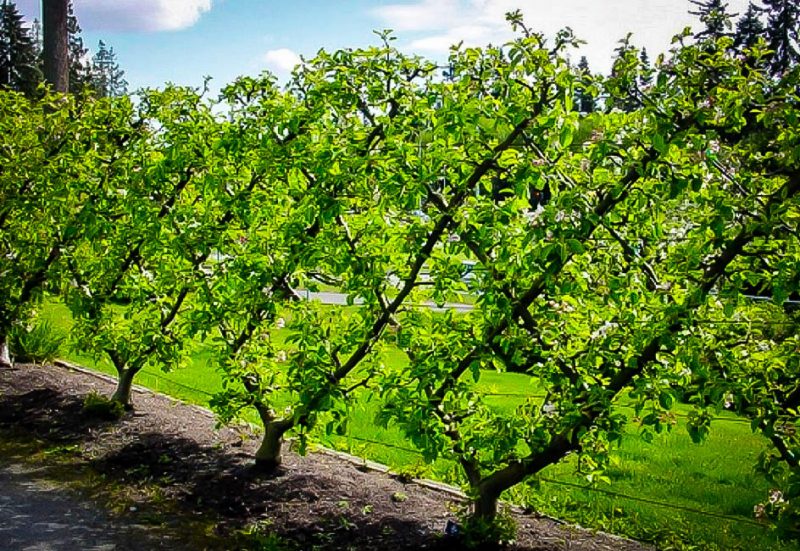
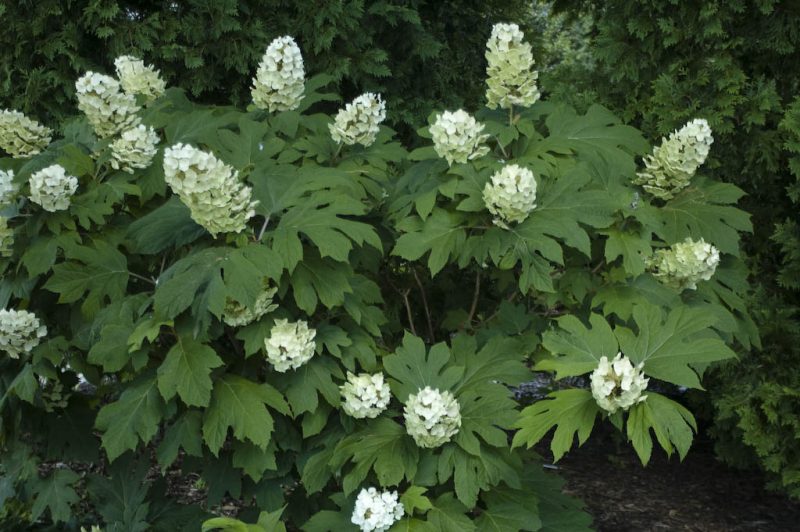
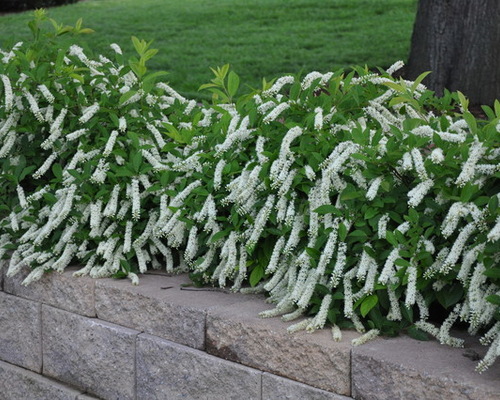
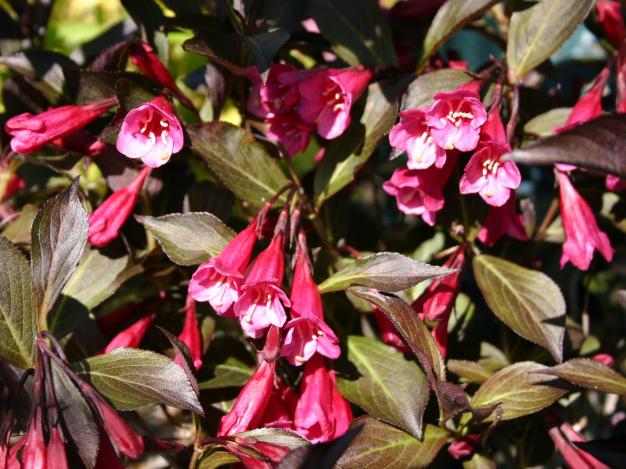
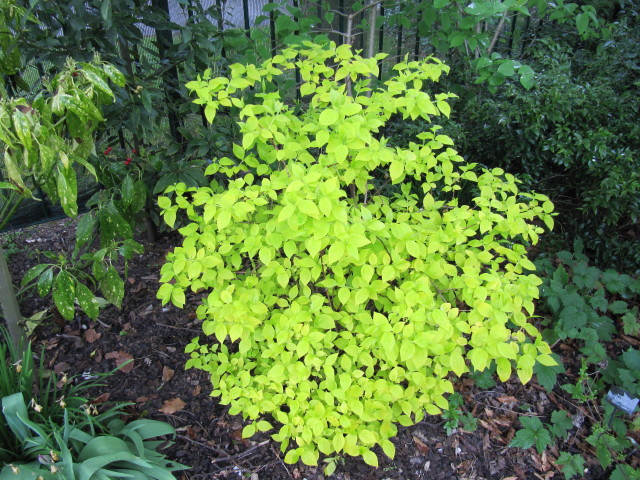

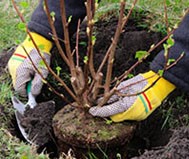


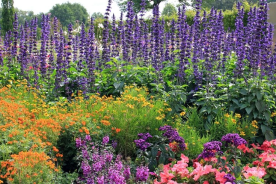
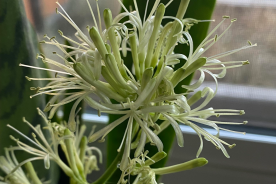

No Comments